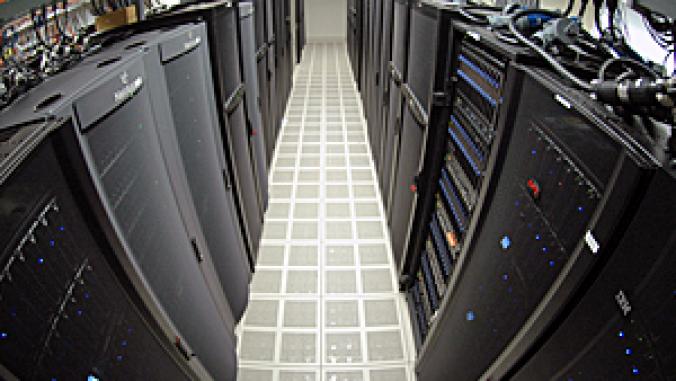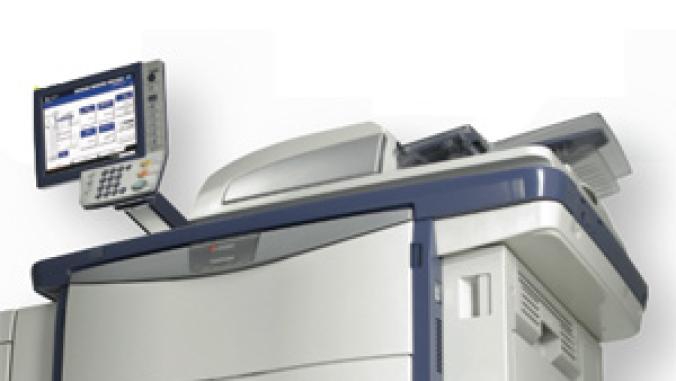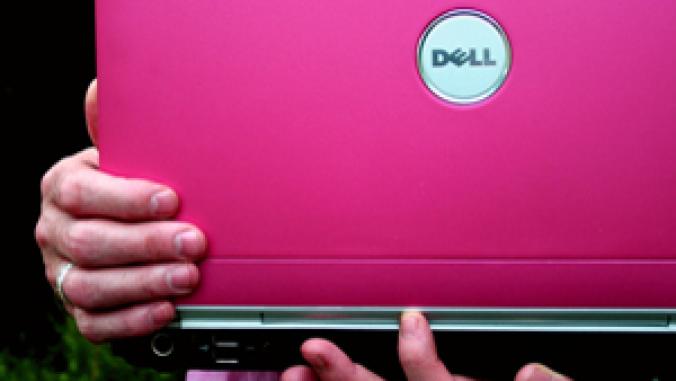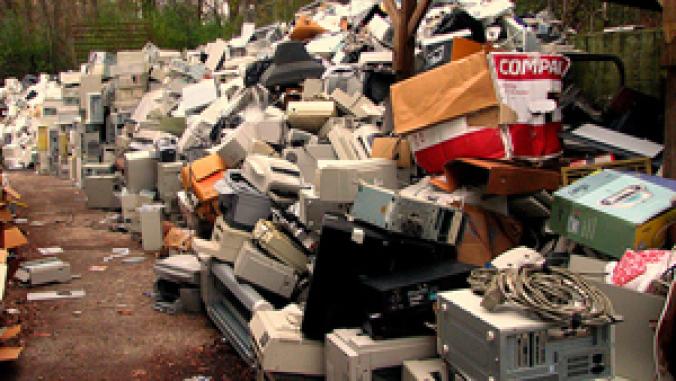E-Waste Could Return to Haunt Us
Some of the toxic jewelry imported from China could be made from U.S. electronic waste, recent research suggests.
Some of the toxic jewelry imported from China could made from U.S. electronic waste, recent research suggests.
Ashland University Professor Dr. Jeffrey Weidenhamer plans to publish two papers in the journal Chemosphere detailing his analysis of jewelry pieces, most of which were imported from China.
He found that some of the samples were composed of lead, tin and copper and concluded that they could have been made from scrap electronic solders from electronic waste and old car batteries. The U.S., he contends, is a likely source of these materials.
"Unfortunately, this appears to be a case of us reaping what we have sown," Weidenhamer said in a statement released Tuesday. "Recent news paints a picture that China is exporting all kinds of horrors to us, yet our research suggests that we are part of a circle of poison - with our own hazardous waste not only harming the Chinese, but also being recycled into products coming back to harm our children."
In 2006, a four-year old Minnesota boy died of lead poisoning after swallowing a heart-shaped charm founded to contain more than 99 percent lead by weight, Weidenhamer cites in his research paper. There have been 26 recalls of more than 8 million lead-contaminated jewelry, toys and clothing, several of which were Chinese imports.
For his study, Weidenhamer and his students collected 139 pieces of jewelry from 10 stores. Nearly half were heavily leaded with an average lead content of 44 percent.
They then tested 16 samples of jewelry with a lead content of 20 percent to 80 percent by weight. Copper and tin also were detected, suggesting a possible origin from scrap solder used in circuit boards.
Researchers also tested 39 jewelry items with a lead content of more than 90 percent. These samples had significant levels of antimony, a key ingredient in lead-acid batteries.
Weidenhamer makes the argument that the materials probably originated in the U.S. using previous research by Seattle's Basel Action Network, a non-profit that focuses on the global trade of toxic waste. The Basel Convention, which set strict controls on the import and export of hazardous materials, has been ratified by 170 countries but not the U.S.
In 2002, Basel Action Network published a report arguing that 80 percent of the electronic waste in the U.S. taken to recyclers gets exported mostly to China, as well as other places in Asia. Basel Action Network claims the waste, including computer circuit boards, often is melted down in environmentally hazardous conditions.
"In China we wondered what became of the old solder collected by bucketfuls each day by the thousands of workers cooking circuit boards there," said Jim Puckett, Basel Action Network's coordinator. "When Jeff called me after substantiating the hypothesis, it made sense."
Ashland University Professor Dr. Jeffrey Weidenhamer plans to publish two papers in the journal Chemosphere detailing his analysis of jewelry pieces, most of which were imported from China.
He found that some of the samples were composed of lead, tin and copper and concluded that they could have been made from scrap electronic solders from electronic waste and old car batteries. The U.S., he contends, is a likely source of these materials.
"Unfortunately, this appears to be a case of us reaping what we have sown," Weidenhamer said in a statement released Tuesday. "Recent news paints a picture that China is exporting all kinds of horrors to us, yet our research suggests that we are part of a circle of poison - with our own hazardous waste not only harming the Chinese, but also being recycled into products coming back to harm our children."
In 2006, a four-year old Minnesota boy died of lead poisoning after swallowing a heart-shaped charm founded to contain more than 99 percent lead by weight, Weidenhamer cites in his research paper. There have been 26 recalls of more than 8 million lead-contaminated jewelry, toys and clothing, several of which were Chinese imports.
For his study, Weidenhamer and his students collected 139 pieces of jewelry from 10 stores. Nearly half were heavily leaded with an average lead content of 44 percent.
They then tested 16 samples of jewelry with a lead content of 20 percent to 80 percent by weight. Copper and tin also were detected, suggesting a possible origin from scrap solder used in circuit boards.
Researchers also tested 39 jewelry items with a lead content of more than 90 percent. These samples had significant levels of antimony, a key ingredient in lead-acid batteries.
Weidenhamer makes the argument that the materials probably originated in the U.S. using previous research by Seattle's Basel Action Network, a non-profit that focuses on the global trade of toxic waste. The Basel Convention, which set strict controls on the import and export of hazardous materials, has been ratified by 170 countries but not the U.S.
In 2002, Basel Action Network published a report arguing that 80 percent of the electronic waste in the U.S. taken to recyclers gets exported mostly to China, as well as other places in Asia. Basel Action Network claims the waste, including computer circuit boards, often is melted down in environmentally hazardous conditions.
"In China we wondered what became of the old solder collected by bucketfuls each day by the thousands of workers cooking circuit boards there," said Jim Puckett, Basel Action Network's coordinator. "When Jeff called me after substantiating the hypothesis, it made sense."




